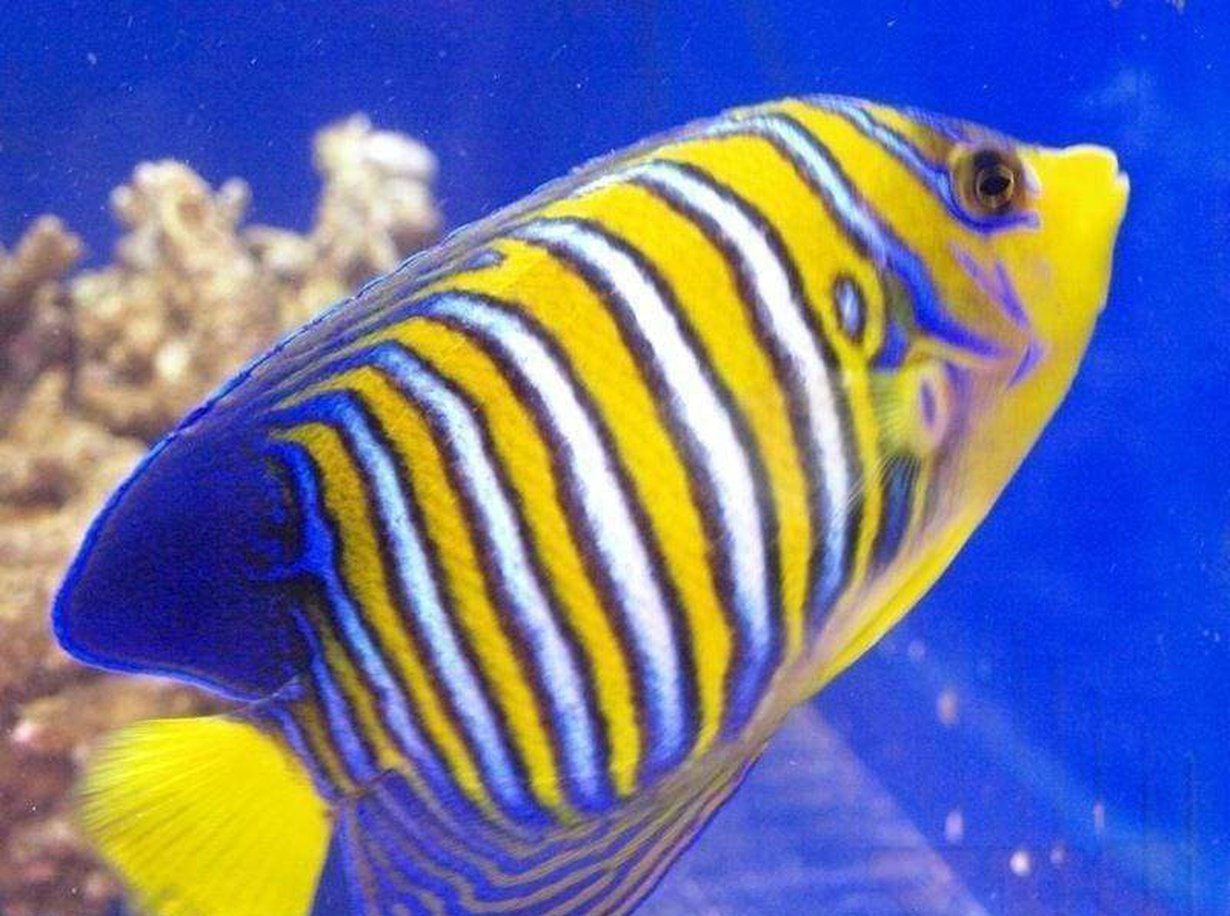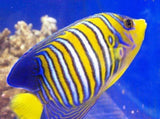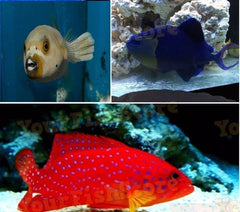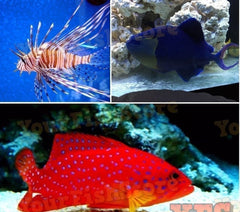Regal Angel Fish (Pygoplites ) Medium - Fish Saltwater Free Shipping
Ebay
$ 208.54

REGAL ANGEL FISH (PYGOPLITES DIACANTHUS) MEDIUM - FISH SALTWATER FREE SHIPPING
Approx 4" - 5"
Minimum Tank Size: 125 gallons
Care Level: Difficult
Temperament: Semi-aggressive
Reef Compatible: With Caution
Water Conditions: 72-78° F, dKH 8-12, pH 8.1-8.4, sg 1.020-1.025
Max. Size: 10"
The Regal Angelfish Pygoplites diacanthus is one of the most striking angelfish to behold. It will reach around 9.8” in length and is adorned with white and orange stripes edged in blues and blacks. The dorsal and anal fins are striped in blue and orange, and the rear portion of the dorsal fin is black with blue spots. The tail is yellow and the fins are edged in a neon blue. These fish are wonderful to photograph in the wild, but unfortunately they are very difficult to keep and rarely survive in the home aquarium.
There are several variants in color form depending on place of origin, but all are equally distinctive. One is all yellow with white stripes. Another is solid yellow on the body with a few black spots on the belly and only a few blue lines on the dorsal fin. One of the most fascinating varieties has all white lines on the body creating what looks like a maze. Those from the Indian Ocean will have a yellow-orange head and breast while those from the Pacific will be a blue-gray in those areas. However most of these variations are rarely, if ever seen in captivity. Other descriptive common names are Royal Angelfish, Empress Angelfish, and Blue Banded Angelfish.
As delicate as it is exquisite, this striped beauty is best kept by expert aquarists with very large systems. It is difficult to care for, reluctant to feed, and is very shy and reclusive. The aquarium needs to be very large, at least 100 gallons or more, with lots of rockwork for hiding places to make it feel secure. The water quality must be pristine and have a pH of 8.1 or higher, as well as very stable temperature and salinity parameters. It is a finicky eater and needs sponge in its diet to survive. The ideal tank would be a reef setting with large established coral colonies. A very mature tank with lots of natural foods can help in long term survival. The best purchase size is 3” to 4” (7 - 10 cm) in length.
If you can get this angelfish to eat and if it adjusts, it will then become king of the tank. This is a very solitary species in the wild, they are rarely found in pairs. It is very timid in the aquarium, typically hiding from even semi-aggressive fish. Its tank mates need to be passive and it should be the first inhabitant added to the tank. It cannot be put in a tank with any other fish that may threaten it, including even a perceived threat. Once well established they become bolder. Combine it with other angelfish with caution. Some specimens have been known to actually attack and chase aggressive Pomacanthus angels that were added later to the tank. Adding two Regal Angelfish that are different sizes at the same time should only be done in a tank that is a minimum 180 gallons.
Because of these challenges, this a fish that will not be seen in many community aquariums. Its temperament could make it ideal for a reef environment, except it will pick as soft and stony corals, as well as zooanthids. Corals such as Xenia and Anthelia will be consumed. They will nip at some soft corals like Lemnalia and large polyped stony corals (LPS). Tridacnid clam mantles will be nipped at and they will eventually be killed. Only in very large systems with large coral colonies will the nipping not devastate the entire grouping, much like in the wild where large colonies are not affected by fish nibblers.
It's very difficult to keep, but it is a beauty! If it acclimates and is happy with its environment, the end result is an exquisite fish that can live for 14 years or more. However for most of us, until collection methods are improved and husbandry knowledge reaches a point where we can help this fish survive long term, we should leave this beauty in its natural home.
QUESTIONS & ANSWERS
Have a Question?
Be the first to ask a question about this.














